- europages
- >
- COMPANIES - SUPPLIERS - SERVICE PROVIDERS
- >
- wet painting
Results for
Wet painting - Import export

RIPPERT ANLAGENTECHNIK GMBH & CO. KG
Germany
Lackieranlagen aus dem Hause Rippert sind vielseitige Alleskönner. Autoteile, Möbelstücke oder Kunststoffzubehör können damit präzise lackiert werden und Sie haben darüber hinaus die Möglichkeit manuelle Elemente wie Spritztische oder -wände sowie automatisierte Komponenten zu kombinieren. Natürlich können wir Lackierabläufe mit Hilfe modernster Robotik für Sie auch vollautomatisiert ablaufen lassen. Bei Rippert entwickeln und planen wir Lackieranlagen gemeinsam mit Ihnen, um alle Voraussetzungen für die optimale Oberflächenbehandlung Ihrer Produkte zu schaffen. Vom Werkstück für PKW über einzelne Bestandteile von Möbeln bis zur Oberflächenbehandlung von ganzen Kunststoffplatten zur späteren Weiterverarbeitung ist alles möglich. Unsere Anlagen stehen für modernste Technik und höchste Effizienz! Eine Lackieranlage muss heute vielen Anforderungen genügen. Sicherlich muss diese Komponente im Anlagenbau in erster Linie dafür sorgen, dass Lacke gleichmäßig auf die Werkstücke aufgetragen werden. In Zeiten des steigenden Kostendrucks müssen Lackieranlagen darüber hinaus immer kostensparender arbeiten. Wir planen und montieren deshalb Anlagen, die höchst effizient mit einem Maximum an Leistung für ein Minimum an Kosten für Sie arbeiten, ohne dass dabei Qualitätseinbußen entstehen. Darüber hinaus ist der Umweltschutz ein wichtiger Faktor. Durch aufwändige Filtertechniken und Abscheidefunktionen erfüllen unsere Anlagen selbst strengste Umweltschutzauflagen.
Request for a quote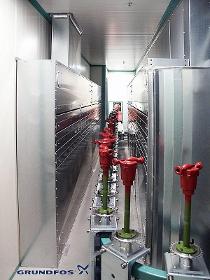
RIPPERT ANLAGENTECHNIK GMBH & CO. KG
Germany
Partial or complete evaporation of the volatile portions of paints before the film formation is completed and/or before a further coating can be applied. In wet painting, the majority of the solvents are already released and exhausted during the coating procedure. In order to dry the freshly applied paint layer, it is necessary to also remove and exhaust the remaining solvents as far as possible. This takes place in special flash-off zones by means of exhaust air and conditioned supply air or fresh air. Flash-off zones are usually the link between paint application and drying. A certain degree of preliminary drying often also takes place here by working with a slightly raised room temperature. Some processes also require a gentle transition to higher temperatures in the dryer. All this can be realised in flash-off zones. On top of that, flash-off zones offer particular protection of the freshly painted surfaces against outside influences, especially dust.
Request for a quote
RIPPERT ANLAGENTECHNIK GMBH & CO. KG
Germany
With high-quality filter tubes and PTFE diaphragms. Paint dust filters Wet painting also results in overspray. Overspray is the solid portion of the paint that is not taken up by the workpiece. According to the purpose of use, the overspray is moist and sticky immediately after release. It is captured by the exhaust air stream in the spray booth and fed to a filter. This can be, for example, a baffle plate filter, paper filter, fleece filter, glass fibre filter or also combinations of these. The adhesive effect causes the paint particles to adhere to the contact surfaces of the respective filter medium, as a result of which a good degree of separation is achieved. However, all these filters are storage filters, i.e. the filters clog up more and more during operation and cannot be regenerated. A filter exchange becomes necessary if the exhaust air rate of the spray booth falls below the minimum. This can be very time-consuming under certain circumstances and the work process must be interrupted in order to do it. To make things worse, not only must the filtered and bound paint residues be disposed of, but also the actual filter materials. Such tooling times are not justifiable for automatic, continuous or multi-layer painting processes. Continuous procedures such as automatically cleaned filters are likewise required for this. The humidity and the adhesiveness of the particles to be filtered are thereby the problem. In order to solve this problem, the paint particles should be relieved of their adhesive capability as far as possible whilst still inside the paint booth. Our patented ‘RTS-Rotation’ system is outstandingly well suited for this. The system is comprised of slowly rotating brush rollers, which take up the adhesive paint particles on the surface of the bristles and allow them to dry there. The bristles are automatically regenerated at pre-specified time intervals by combing devices that swing in at the rear of the brush rollers. The dislodged paint residues can then be removed and disposed of either manually during work breaks or automatically during operation. The degree of separation of this system is, however, insufficient to satisfy the environmental protection requirements concerning residual dust content in the exhaust air. A further filter stage is necessary for that. It must be assumed that the paint particles arriving here are to a certain extent still damp and sticky. For this we use special paint dust filters with high-quality filter tubes with PTFE diaphragms. If necessary, precoating agents (auxiliary dust) are used in order to neutralise the adhesive capability of the particles and to keep the dust layer on the filter elements permeable to air. The precoating agent is injected into the raw air pipe by means of special dosing units. The filter tubes are cleaned by means of compressed air impulse cleaning. The use of this technology requires special know-how. We have had the appropriate experience for almost ten years. The implemented plants have capacities ranging from 5,000 to 90,000 m³ /h. Because of the large number of different paint systems, individual experiments are usually necessary in our pilot plant in order to find the correct solution for the individual case.
Request for a quote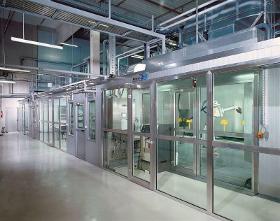
RIPPERT ANLAGENTECHNIK GMBH & CO. KG
Germany
Painting in cleanrooms according to the DIN EN ISO 14644 standard Cleanroom technology Many processes for the application of technically functional coatings for increased resistance to scratching (hardcoat), UV stability, lotus effects, anti-fog or other thin-film applications place high demands on the implementation and function of the coating plant and its components. Thanks to a modular design, optimum plants are conceived in close cooperation with customers and users that minimise faulty coatings caused by particle inclusions and the resulting product scrap or rework expenditure. The plants are designed strictly in accordance with the DIN EN ISO 14644 the standard. In designing the filter stages we orientate ourselves to a particle size with a diameter of 0.5 µm. Built-in components such as conveying equipment, robotics, application technology etc. are adapted by careful selection of the appropriate task. A further criterion in the conception of the plants is fast and efficient cleaning and maintenance, in order to obtain long plant operation times with a constantly good yield. Traditional applications are the coating of diffusers or cover glasses for car headlights or polycarbonate glazing.
Request for a quote
RIPPERT ANLAGENTECHNIK GMBH & CO. KG
Germany
Immersible objects can be painted economically with the aid of dip painting. Rapid and complete wetting takes place by the immersion of the workpieces. By comparison, electrophoretic coating is more complex, but it is more advantageous in individual cases. ADP / CDP electrophoretic dip coating Electrophoretic dip coating is a modern, efficient painting method and is used extensively in industry for the coating of metals and metallised plastic surfaces. In the electrolytic coating of components using direct current, distinction is made between cathodic dip painting (CDP) and anodic dip painting (ADP), depending on the polarity. The paint film is deposited onto the object surface from an aqueous paint dispersion by the effect of a DC current. In anodic dip painting (ADP) the article being painted is connected as the anode, while in cathodic dip painting (CDP) it forms the cathode. When current flows, the paint dispersion, which contains the ionically stabilised paint particles, coagulates in the acidic boundary layer (ADP) or alkaline boundary layer (CDP) and forms a paint film, which adheres well and is hard and resistant to corrosion after hardening. Advantages:
Request for a quoteDo you sell or make similar products?
Sign up to europages and have your products listed
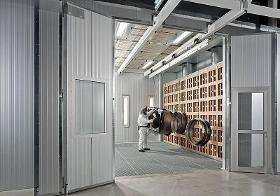
RIPPERT ANLAGENTECHNIK GMBH & CO. KG
Germany
Spray walls and spray booths with dry separation via cartons. For lower utilisation times or overspray quantities RES dry spray booth For lower utilisation times or smaller overspray quantities, spray systems with dry separation offer a meaningful alternative to water-sprinkled systems. The Rippert modular spraying system type RES enables individual adaptation to the respective case of need. The filter system of the RES dry spray wall consists of individual square cardboard boxes. A sheet metal frame serves as a support structure for the filter box. In order to save costs, there is a possibility to vary the individual filter boxes in the spray booth, without exchanging all of the filter elements. Function The overspray is caught by the exhaust air stream and fed to the filter. The solids are filtered out here, while the cleaned exhaust air is blown out into the open air by the fan. Versions The basic version consists of a wall with a two-fold filter stage. Paper filter boxes form the first filter stage. A glass fibre fine filter arranged directly behind it represents the second filter stage. The attached radial fan is equipped with spark protection in the suction nozzle as well as an explosion-proof motor. The spray booth can additionally be equipped with removable or fixed side and ceiling panels. The RES dry spray booth is available in galvanised sheet metal or in stainless steel. Advantages Cleaning / maintenance The spray wall is designed such that the filter elements can be exchanged with little effort in a very short time. Once it is saturated, the filter box is removed from the sheet metal frame and disposed of in an environmentally-friendly manner.
Request for a quote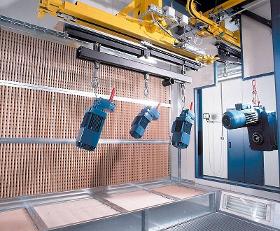
RIPPERT ANLAGENTECHNIK GMBH & CO. KG
Germany
Spray walls and spray booths with dry separation via pre-filters and fine filters. Spray walls and spray booths with dry separation For lower utilisation times or overspray quantities, spraying systems with dry separation offer a meaningful alternative to water-sprinkled systems. The Rippert modular spraying system type RTS enables individual adaptation to the respective case of need. Function The overspray is caught by the exhaust air stream and fed to the filter. The solids are filtered out here, while the cleaned exhaust air is blown out into the open air by the fan. Versions The entire spray wall and the drip tray are made of galvanised sheet steel. The basic version consists of a wall with a two-fold filter stage. The attached radial fan is equipped with spark protection in the suction nozzle as well as an explosion-proof motor. The first filter stage is formed by a paper filter or a baffle plate filter, consisting of two rows of galvanised sheet metal lamellae arranged one behind the other. A glass fibre fine filter arranged directly behind it represents the second filter stage. The spray wall can additionally be equipped with removable or fixed side and ceiling panels. Each version is also available with floor suction pan, available with an integrated 2-stage filter and grating cover. Accessories In addition, the spray wall can be equipped with various accessories from the Rippert product range, such as explosion-proof lights, energy-saving flaps, turntables, etc. We recommend the installation of a supply air system for the replacement of the exhausted air. Cleaning / maintenance The spray wall is designed such that the filter elements can be exchanged with little effort in a very short time. For faster cleaning, baffle plate filters should by sprayed with a release agent (e.g. strippable varnish) before being put into operation. Underfloor paint mist extraction With dry separation, consisting of a support structure with attached paper filter, grating cover and a suction duct with air quantity adjustment.
Request for a quote
RIPPERT ANLAGENTECHNIK GMBH & CO. KG
Germany
Standard advantages: RTS-Rotation – low-maintenance dry spray booth Overspray dry separation demonstrates its strengths in practice above all when relatively large quantities of paint have to be processed and the overspray portion cannot be reduced any further. Spray booth with dry separation are usually equipped with disposable filters or manually regenerative filters. These cause costs for spare filters, maintenance and disposal. In addition to that, operation has to be interrupted in order to exchange the filters. The ‘RTS rotation’ system was developed by Rippert in order to reduce these costs and tooling times. Maintenance intervals and filter service lives are prolonged significantly in comparison with conventional systems due to the new brush pre-filtration. How the ‘RTS-Rotation’ system works Overspray separation in the RTS-Rotation system takes place by means of a pre-filter and a fine filter stage. The pre-filter stage is formed by vertical, slowly rotating brush rollers. The bristles present a very large total surface area and absorb the adhesive particles from the overspray. During the slow rotation, the paint particles can dry on the tips of the bristles. This results in slowly growing cakings on the bristles. Scrapers are mounted in the area behind the brush rollers that continuously remove these cakings from the bristles. The dislodged, hardened material falls into the drawers arranged under the brushes and can thus be simply disposed of. The dry paint dust may often be disposed of as ‘commercial waste’. The brushes otherwise require little maintenance and do not need to be exchanged or renewed. The fine filter stage is formed by a special fleece filter, which is arranged above the brush rollers and must be manually maintained or exchanged in the standard version. The maintenance intervals depend on the paint material used. Automatic cleaning or an external fine filter with automatic cleaning is also possible as an option. Over 10 years of operational experience shows that around 75 to 95% of the overspray is separated out by the pre-filter stage and the rest by the fine filter stage. The degree of separation depends strongly on the type of paint and the drying reactivity during the flying phase. Use of the RTS-Rotation with the following paints Before practical use, the paints are tested and approved in Rippert’s own pilot plant. Stove enamels and 100% UV paint systems cannot be used. The horizontal version Furthermore, it is possible to use the system as a horizontal underfloor extraction system. This version is used, for example, by a machine manufacturer for large parts. In addition, a drag conveyor with gulley extraction is used there in order to automatically transport the particles cleaned off the brushes out of the pit. Conclusion The RTS-Rotation system is particularly useful when relatively large quantities of paint with an unavoidable overspray portion have to be processed, as otherwise a great deal of residual waste would result using conventional technology. Compared to water-sprinkled spray walls and normal dry spray booths the amortisation period is shorter; it is frequently less than two years.
Request for a quote
RIPPERT ANLAGENTECHNIK GMBH & CO. KG
Germany
The correct air budget is an often underestimated quality factor in surface treatment technology. Where heating, cooling, movement and filtration is concerned, a great deal of energy can be saved with innovative solutions. Supply air systems replace extracted air quantities and ensure: Supply and exhaust air systems Supply air systems ensure draught-free and clean ventilation of work rooms, while high-efficiency exhaust air systems with fans and filter systems are responsible for the necessary air exhaust. This takes place with the lowest possible use of energy and with the longest possible intervals between maintenance and cleaning operations. We also offer intelligent air solutions for dryers, pre-treatment plants and cooling zones. Heat recovery A further important point is heat recovery. We can achieve up to a maximum of 80% heat recovery with the most diverse systems. Cross-current, rotary heat exchanger, heating pipe or circulatory systems – they all have their own advantages and efficiencies, which we integrate according to requirements during the planning of the plant.
Request for a quote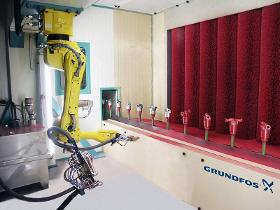
RIPPERT ANLAGENTECHNIK GMBH & CO. KG
Germany
The classic application of industrial robots. The application of wet paint is one of the classic uses of industrial robots. As a specialist for surface coating systems, Rippert naturally offers the full range of solutions in the Ex and non-Ex area. Robots and application technology are integrated into the overall system in relation to the specific customer and his application. Modern software concepts ensure economically optimum operation.
Request for a quote
RIPPERT ANLAGENTECHNIK GMBH & CO. KG
Germany
Powder systems with robots can be effectively used even for small batches. In addition to the classic method of powder coating using manual spray guns or masts, the demand for robot systems has risen sharply. Rippert offers the entire spectrum here too. Both powder-coating systems with robots and wet painting systems are supplied with intelligent software solutions. This also allows the economical processing of small lot sizes. Automatable high-speed paint changing systems have also been available for some time. Rippert plays a leading role in automated powder-coating systems with industrial robots.
Request for a quote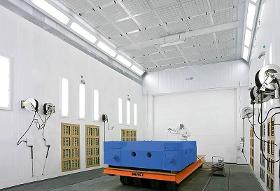
RIPPERT ANLAGENTECHNIK GMBH & CO. KG
Germany
Up to three processes – cleaning, painting and drying in one booth. Multi-process booth Just one booth for cleaning, painting and drying (up to three processes). Dry paint filter and wet cleaning in one booth – that is actually a contradiction in itself. Thanks to the separate air guidance, the exhaust air is fed downwards through the grating when drying and laterally through the filter boxes when painting, so that very little moisture enters the dry filter and virtually no particles get into the cleaning water. In order to prevent the ingress of particles, the gratings can additionally be covered over during painting. Any paint that does get into the cleaning water is usually already dry, so that no dilution in the classic sense takes place; instead, it behaves like small, filterable plastic balls. Advantages:
Request for a quote
VENJAKOB MASCHINENBAU GMBH & CO KG
Germany
To conform to market requirements, widely differing machines for painting/coating mouldings, window parts and other profile components were developed. The type and number of guns depends both on the paint system and on the quality envisaged. Air, Airmix or Airless spraying systems can be used for this purpose. The individual machine types can be configured with all conveyor systems of our portfolio and combined with the respective drying systems. The difference between the VEN SPRAY MOULD (LT) and (LW) variants is their type of extraction. LT stands for dry extraction, LW for water-backed extraction. VEN SPRAY MOULD COOLAC is exclusively designed for processing water-based paints. The overspray is constantly collected and condensed in chilled collector systems. The condensation of the controlled air humidity keeps the collector devices and chilled conveyor systems permanently wet. This reliably prevents paint particles from drying during operation. The strip painting plants can be supplemented by further Venjakob plant technologies specifically tailored to the process such as brush sanding/denibbing machines, dryers or conveying equipment.
Request for a quoteResults for
Wet painting - Import exportNumber of results
14 ProductsCompany type
Category